MASTERING LEAD NURTURING
Getting leads is no longer sufficient in today’s digital marketing environment to promote long-term company growth. Businesses must make an investment in developing relationships that help prospective consumers navigate the purchasing process if they want to genuinely turn prospects into devoted customers. This is where lead nurturing, an essential tactic for enhancing value, fostering trust, and boosting conversions, comes into play. Understanding lead nurturing is crucial, regardless of whether you work in digital marketing or are a business owner looking to improve your sales funnel. The fundamentals of lead nurturing, successful tactics, how email marketing aids in the process, and how it fits into the larger framework of digital marketing are all covered in this extensive guide.
Lead nurturing is a systematic, individualized process that educates, creates trust, and confidently guides your prospects down the sales funnel. It goes beyond simple follow-ups and promotional emails. Any company hoping to expand sustainably in the cutthroat digital world of today must become proficient in lead nurturing.
The process of establishing connections with potential clients at each level of the sales funnel and throughout the buyer’s journey is known as lead nurturing. It involves paying attention to the needs of potential customers and giving them the knowledge and assistance they require in order to make an informed purchasing decision.
Lead nurturing is the strategic process of building relationships with potential customers at every stage of the sales funnel. Instead of trying to immediately convert leads into buyers, lead nurturing focuses on educating, engaging, and gradually guiding them toward making a purchase decision. This process involves consistent communication through relevant content, timely follow-ups, and personalized interactions that align with the lead’s behavior and needs. The primary goal is to earn trust and stay top-of-mind until the lead is ready to take action. It’s a vital aspect of inbound marketing, where the focus is on delivering value rather than pushing for a sale.

Successful lead nurturing requires a deep understanding of the buyer’s journey. Every lead is different—some may be ready to purchase soon, while others might still be exploring their options. By segmenting leads based on factors such as industry, behavior, interests, and stage in the sales funnel, businesses can tailor their content and communication to match. Common tactics include sending personalized email sequences, offering downloadable resources (like eBooks or whitepapers), hosting webinars, and using retargeting ads. Marketing automation tools are often used to track interactions and trigger specific responses based on user behavior, making the process more efficient and scalable.
Email marketing plays a central role in lead nurturing. Automated email workflows can deliver a sequence of messages over time, helping to educate the lead about the company’s offerings, answer common objections, and build rapport. A well-crafted email nurture campaign provides valuable insights, case studies, testimonials, and offers—slowly moving the lead closer to a decision point. Personalization is key; using the lead’s name, addressing specific pain points, and sending the right content at the right time significantly boosts engagement and conversion rates.
Lead nurturing is not just about pushing content—it’s about listening and responding. Businesses must analyze metrics like email open rates, click-through rates, website visits, and content downloads to understand what resonates with leads. This data-driven approach allows continuous improvement of nurturing strategies. In today’s competitive digital landscape, where customers are flooded with information and choices, a thoughtful and consistent lead nurturing strategy sets brands apart, increases lead quality, and shortens sales cycles—ultimately driving better ROI and long-term customer relationships.
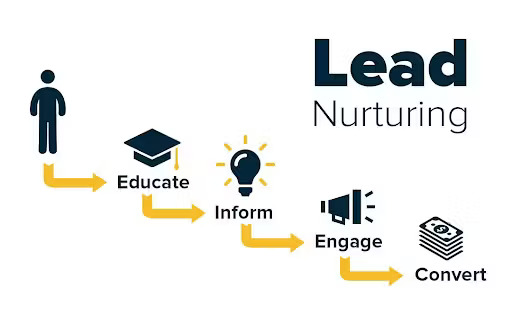
LEAD NURTURING MEANING
The practice of establishing and strengthening connections with customers at each step of the sales funnel is known as lead nurturing. It focuses on hearing what prospects need and giving them the data and solutions they require. Lead nurturing is the process of turning leads into paying clients, as opposed to lead generation, which is focused on obtaining new leads. It is an ongoing process rather than a one-time event that guarantees prospective customers will remember your company.
When a lead enters your system, they usually don’t become customers right away. They can require more time to consider their alternatives, more knowledge, or a closer bond with your business. Lead nurturing keeps the prospect interested throughout this time by providing them with relevant material based on their interests and stage of purchase. Emails, blog entries, social media exchanges, customized messages, or special offers could all be part of this.
Good lead nurturing makes sure that your brand is already seen as authoritative, reliable, and trustworthy by the time a prospect is prepared to buy. It is a tactful, dependable marketing strategy that prioritizes helpfulness over aggressive pitching. Businesses who don’t nurture leads run the danger of losing them to more astute rivals in today’s cutthroat market. Therefore, mastering lead nurturing can drastically improve ROI and customer lifetime value.
Lead nurturing refers to the systematic process of engaging and developing relationships with potential customers (leads) throughout their buying journey. Rather than pushing for an immediate sale, the focus is on providing value, answering questions, and addressing concerns that a lead may have. This approach helps move them gradually through the sales funnel until they are ready to make a purchase decision. Lead nurturing is a critical aspect of digital marketing and inbound strategies because most leads are not sales-ready when they first come into contact with a business. Instead of letting them go cold, nurturing helps maintain their interest and builds a foundation of trust.
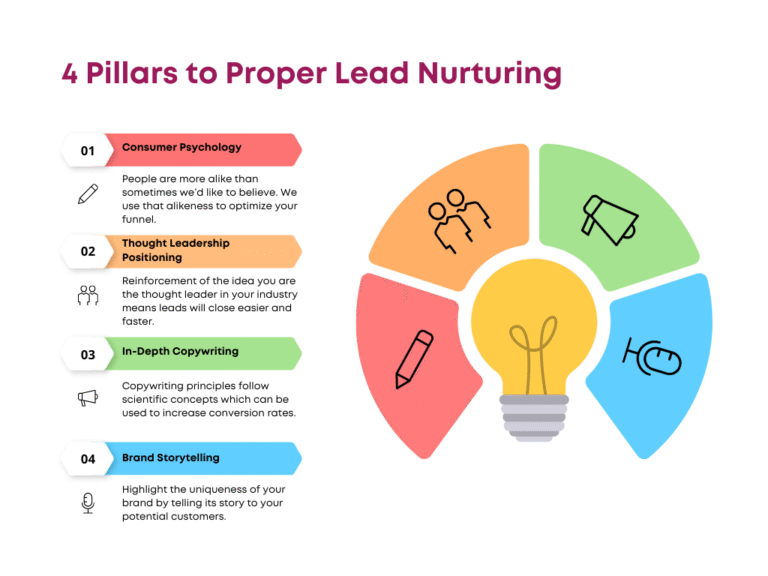
The core idea behind lead nurturing is rooted in relationship building and timing. Every customer goes through a consideration process before making a purchase, and lead nurturing respects that timeline. By delivering relevant, helpful, and timely content—whether through email, social media, or other channels—businesses can stay top-of-mind and ensure that when a lead is ready to buy, their brand is the first choice. It’s not about hard selling; it’s about being present, understanding what the customer needs, and supporting them through each stage of their decision-making process.
Lead nurturing also involves understanding the unique characteristics of each lead, such as their industry, company size, role, interests, and behavior. With this information, marketers can create personalized content that resonates with the lead’s specific challenges or goals. For instance, a lead who downloaded a whitepaper on marketing automation might receive a follow-up email with a case study showcasing how similar businesses used automation tools effectively. This tailored approach enhances engagement, builds trust, and demonstrates expertise—key factors in turning a prospect into a loyal customer.
In today’s digital age, where buyers have access to vast amounts of information and control much of the buying process, lead nurturing has become more important than ever. It empowers businesses to guide leads without being intrusive, ensuring a smoother and more confident transition to the purchasing stage. Ultimately, lead nurturing is about adding value over time, maintaining relevance, and proving that your brand understands and can solve the customer’s problem. It transforms raw leads into qualified sales opportunities and strengthens long-term business relationships.
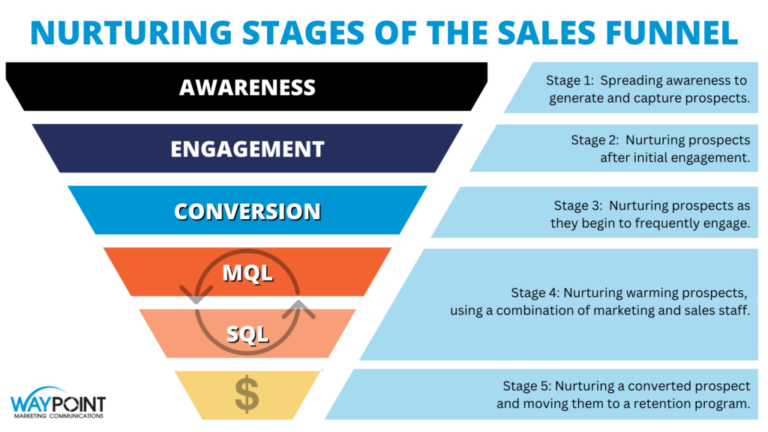
LEAD NURTURING STRATEGY
To increase conversions, a clear lead nurturing plan is essential. It serves as a guide for methodically handling leads according to their actions, degree of interest, and stage of the buyer’s journey. Delivering the appropriate message to the appropriate individual at the appropriate moment is the ultimate objective. Businesses risk distributing irrelevant material if they don’t have a good plan, which could cause disengagement or even brand aversion.
Lead segmentation is the first step in developing a successful lead nurturing plan. Every lead has distinct needs, awareness levels, and goals; they are not all made equal. Segmenting leads according to source, activity, engagement level, or demographics enables marketers to improve relevance and tailor communications. Following the definition of segments, content that is tailored to each group’s interests and pain points can be produced.
Lead scoring is another important part of the plan. This entails giving leads numerical numbers according to their interactions with your company, like clicking on a promotional email, attending a webinar, or downloading a whitepaper. By determining which leads are ready for sales and which need further nurturing, lead scoring assists marketing and sales teams in prioritizing leads.
When it comes to implementing nurturing tactics, automated marketing platforms are essential. Tools such as HubSpot, Mailchimp, ActiveCampaign, or Marketo allow marketers to create processes that score prospects, send emails automatically, or deliver messages in response to certain behaviors. By ensuring timeliness and consistency in communication, these platforms lessen human error and manual labor.
Moreover, ongoing assessment and optimization are also essential components of a successful approach. The success of your efforts may be assessed using metrics like open rates, click-through rates, conversion rates, and engagement levels. Businesses may enhance their targeting, frequency, and messaging by using these information to generate better outcomes.
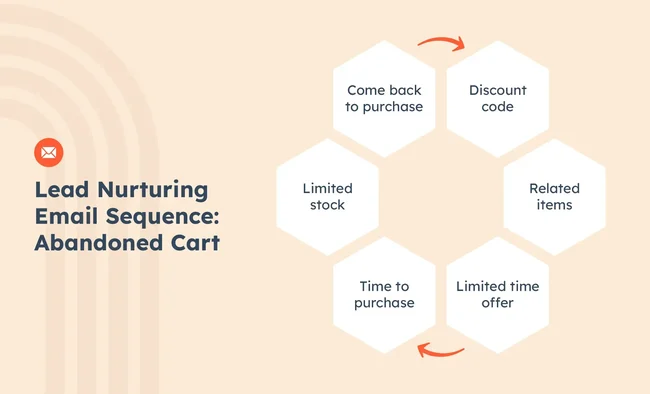
HOW DOES EMAIL MARKETING SUPPORT LEAD NURTURING
The majority of lead nurturing programs are built around email marketing. It is among the most effective channels for gradually engaging prospects because to its scalability, customization potential, and automation features. By giving leads useful content that fosters trust and eventually promotes conversion, email marketing enables you to stay in constant contact with them.
In lead nurturing, email marketing serves to inform, educate, and direct. Nurturing emails are meant to provide value rather than make a hard sell. An example of a sequence would be a welcome email, followed by informative blog posts, a case study, client endorsements, a product demonstration, and a customized offer. The lead is gradually guided through the awareness, deliberation, and decision phases of the purchasing process in this sequence.
The secret to successful email nurturing is segmentation. You can target particular audiences with the content of your emails by segmenting your email list according to user behavior and preferences. A potential customer who requested a product demo requires different information than one who downloaded a beginner’s guide. Beyond just utilizing first names, personalization also involves bringing up previous exchanges, offering pertinent content, and sending emails at the right time.
Lead nurturing procedures are made possible in large part by email automation technologies. Triggers can be configured for things like when a lead clicks a link, opens an email, goes to a webpage, or registers for a webinar. The system may automatically send the subsequent email in the series based on these triggers, guaranteeing that the content is pertinent and current. This makes nurturing effective and scalable, particularly for companies with huge contact lists.
Multi-channel tactics are also supported by email marketing. Leads can be redirected to your website, blog, landing pages, or social media accounts via emails. They can also be used to advertise free trials, ebooks, and webinars—all of which are important touchpoints in the nurturing process. You may convert brand awareness into brand preference by maintaining a strong presence in your lead’s inbox through regular, excellent email contact.
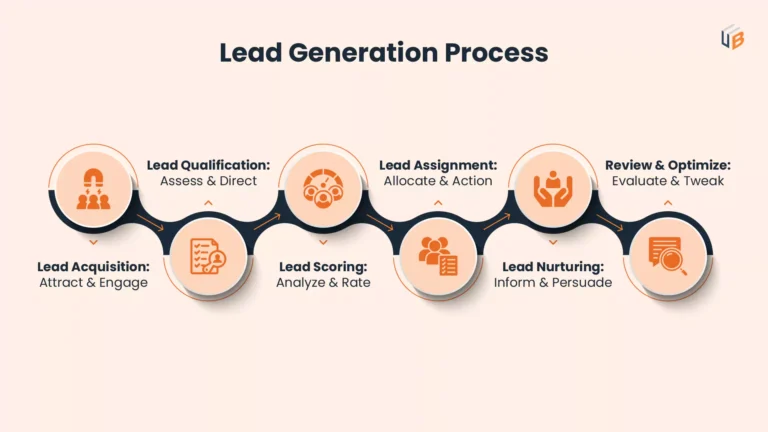
LEAD NURTURING PROCESS
Businesses use an organized method called the lead nurturing process to guide prospects from initial interest to eventual purchase. It takes several procedures to guarantee that no lead is overlooked and that each prospective client has the information they ought to proceed with confidence. A summary of the lead nurturing procedure is provided below:
- LEAD CAPTURE
The first step in the process is gathering leads via a variety of platforms, including paid advertisements, webinars, social media, website forms, and downloadable content. In order for the prospect to enter your system, the objective is to obtain basic contact information, such as name and email. To attract sign-ups, it’s crucial to employ alluring offers like free guides, discounts, or checklists.
- LEAD SEGMENTATION
After entering the system, leads must be divided into groups according to a variety of criteria, including buyer persona, source, behavior, and demographics. This makes communication more relevant and efficient by enabling marketers to target particular groups with their nurturing initiatives.
- LEAD SCORING
Leads are ranked according on their behavior and level of engagement. For example, a lead who frequently opens emails, reads numerous blog entries, and downloads materials is probably more interested than an idle one. Lead scores are useful for identifying sales-qualified leads and prioritizing follow-ups.
- CONTACT DELIVERY
The nurturing process revolves around this. Marketers provide the lead with informative and educational information through automation, content campaigns, and email sequences. Whitepapers, case studies, comparison sheets, video tutorials, and how-to instructions are examples of content kinds.
- ENGAGEMENT PROCESS
It’s critical to monitor how leads interact with your material during the nurturing process. Are they responding to emails? Are you clicking links? Taking part in webinars? You can learn what’s working and where to improve with the aid of these engagement indicators. Sales outreach may be appropriate for leads exhibiting higher levels of engagement.
- LEAD QUALIFICATION
Some leads will become sales-qualified as they progress through the nurturing process, indicating that they have demonstrated sufficient interest and intent to purchase. The sales team receives these leads for follow-up, demonstrations, or consultations. In the meantime, unready leads proceed through the nurturing funnel.
- CONVERSION AND FOLLOW-UP
The nurturing doesn’t stop when the lead turns into a customer. Upsell offers, satisfaction questionnaires, and onboarding emails are examples of post-purchase nurturing that can convert new clients into devoted ones. This increases the worth of your nurturing process and facilitates the development of enduring relationships.
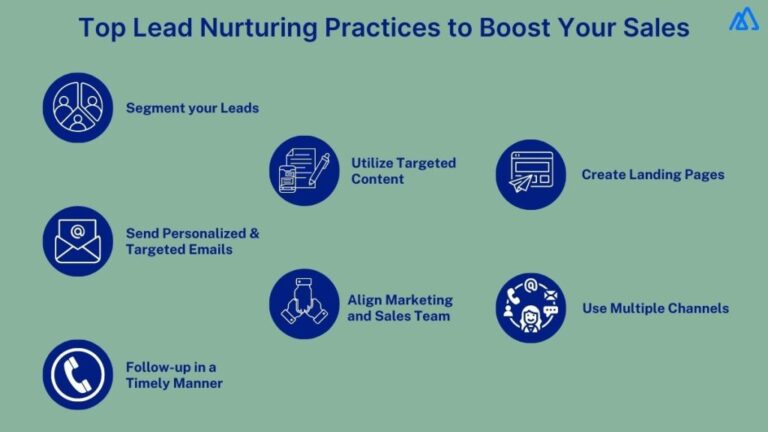
LEAD NURTURING IN DIGITAL MARKETING
Because it fills the gap between enticing prospects and turning them into customers, lead nurturing is a fundamental component of digital marketing. Nurturing offers a customized, value-driven strategy that breaks through the noise in a crowded online marketplace where consumers are inundated with advertisements, cold pitches, and generic content. It assists advertisers in matching their messaging to the goal of their target audience, guaranteeing increased engagement and more robust outcomes.
Email, social media, sponsored advertisements, SEO, and content marketing are all components of digital marketing. Every one of these channels plays a part in the process of developing leads. For example, blog entries that are optimized for search engines can draw in organic leads, who will then join your nurturing sequence. Paid advertisements can remind people who participated in earlier campaigns of your worth by retargeting them. Email is still the most dependable way to send customized content straight to a prospect’s inbox, but social media can be a platform for continuous interaction.
Furthermore, digital marketing is greatly aided by data analytics. Tracking how leads engage with your content across all touchpoints is made easier with tools like Google Analytics, HubSpot, and CRM platforms. This makes your campaigns more intelligent and sensitive by enabling you to adjust your nurturing strategies in response to real behavior.
The capacity of lead nurturing to provide long-term value is one of its main benefits in digital marketing. While short-term efforts aim for instant conversions, nurturing creates the foundation for advocacy, repeat business, and customer retention. It changes your marketing strategy from transactional to relational, building audience trust and an emotional bond.
Furthermore, permission-based nurturing emerges as a more morally sound and practical substitute as privacy laws tighten and customers become leery of intrusive practices. Brands may foster goodwill and enduring loyalty by only interacting with leads once they have opted in and by offering value at every stage of the buyer’s journey.
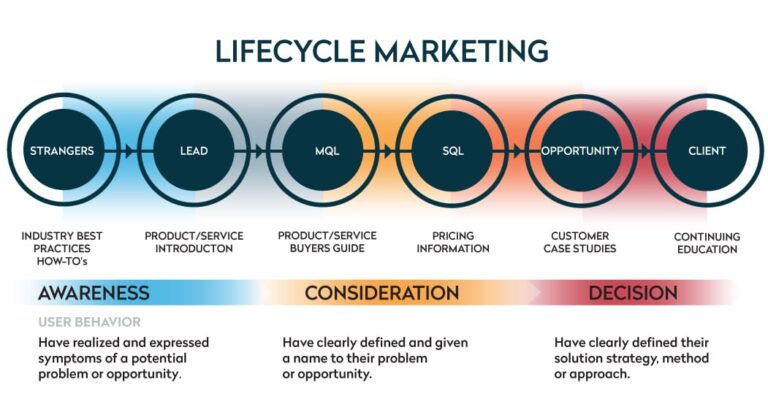
Lead nurturing provides a potent means of meaningfully engaging prospects in a time when attention spans are getting shorter and competition is increasing. Building connections based on trust, relevance, and value is more important than merely sending emails or trying to close deals. You can create the conditions for more conversions, improved client connections, and long-term company success by putting in place a strong lead nurturing plan, utilizing email marketing’s potential, and coordinating your efforts with your overarching digital marketing objectives. This strategy will only grow more crucial in the upcoming years as more companies realize the advantages of nurturing versus cold selling.
The strategic practice of establishing and preserving connections with prospective clients at each phase of the buyer’s journey through the provision of timely, pertinent, and tailored material that aids in their decision to buy is known as lead nurturing. Through regular communication across several channels, including email, social media, and website interactions, it focuses on comprehending a lead’s needs, behavior, and pain points. Using marketing automation tools, delivering tailored content, segmenting audiences, and coordinating sales and marketing teams to guarantee smooth interaction are all components of an effective lead nurturing strategy. In the end, it helps companies turn more leads into devoted clients by building trust, proving value, and maintaining brand awareness along the decision-making process.
